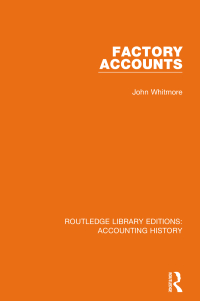Answered step by step
Verified Expert Solution
Question
1 Approved Answer
HW - 7 & 8 Comprehensive Problem ( I use P and S to refer to the parent and subsidiary ) Pequity Company purchased 8
HW & Comprehensive Problem I use P and S to refer to the parent and subsidiary
Pequity Company purchased of the common stock of Sequity Company on April Year
The fair value of the consideration transferred consisted of a cash payment of $ and
contingent consideration as described in the earnout agreement below. Under the agreement,
Pequity Company agrees to pay an earnout contingent consideration to the stockholders of
Sequity as part of the consideration for their shares. The Company has the option of paying any
earnout in cash andor shares of its common stock and has estimated the fair value of the con
tingent consideration to be $ Acquisitionrelated costs of $ are included in other
expenses. Sequity will become a reportable segment for consolidated purposes. No control premium
was included in the offer price.
On the acquisition date, the book values and fair values of Sequitys assets and liabilities were equal
with the following exceptions:
Book Value Fair Value
Inventory
Property & Equipment
The increase in Property & Equipment will be depreciated over seven years. The Company uses
the full year convention for depreciation a full year's depreciation in the first year
All fair value estimates were considered final no measurement period adjustments
All inventory acquired was sold by yearend.
Earnout ContingentConsideration Agreement Pequity and Sequity Company
April Year
The agreedupon earnout has three components. If the yearly revenue of Sequity exceeds a
target level at the end of years and Pequity will pay the shareholders of Sequity an
amount equal to of the excess, up to $ per year for a maximum earnout payment of
$ in total.
The initial target revenue level for year is $ and increases in amount by per
year. Target levels in years and will be $ and $ Pequity estimates the
fair value of the earnout using the present value of expected payments and its incremental bor
rowing rate adjusted for risk of The fair value of the three earnouts was estimated to be
$ on the date of acquisition, computed as follows:
Fair Value of Contingent Consideration
Year Year Year Total
Estimated Revenues of Sequity $ $ $
Target level Revenues
Estimated Excess
Reduced by
Potential Payout
Present Value Factor
Fair value of EarnOut $
Changes in fair value and interest charges are included in other expense income
on the income statement.
Balance Sheet
Beginning of Year January
Pequity Sequity
Cash $ $ $$
Accounts Receivables $ $
Inventory $ $
Property and Equipment $ $
Total $ $ $ $ $
Accounts and Notes Payable $ $ $$
Dividends Payable $ $
Capital Stock, $ par value $$
Other Contributed Capital $ $
Retained Earnings $$
Treasury Stock $$
Total $ $ $ $$
Sequity Company
Trial Balance on
April Year April Year
Sequity
Cash $
Accounts Receivables
Inventory
Property and Equipment
Cost of goods sold
Selling, General, & Administration
Other expenses
Treasury Stock
Total $
Accounts and Notes Payable $
Dividends Payable
Capital Stock, $ par value
Other Contributed Capital
Retained Earnings Yr NI
Sales
Total $
Step by Step Solution
There are 3 Steps involved in it
Step: 1

Get Instant Access to Expert-Tailored Solutions
See step-by-step solutions with expert insights and AI powered tools for academic success
Step: 2

Step: 3

Ace Your Homework with AI
Get the answers you need in no time with our AI-driven, step-by-step assistance
Get Started


